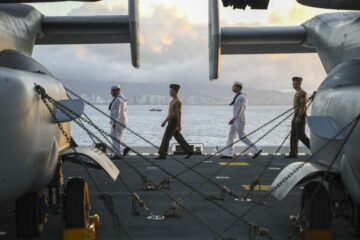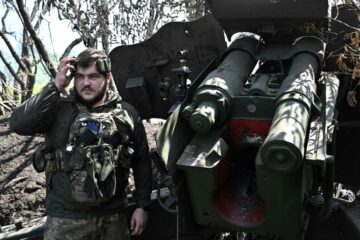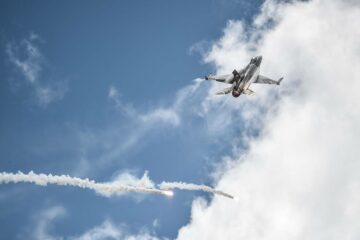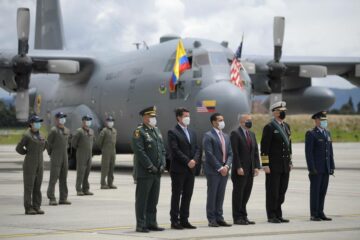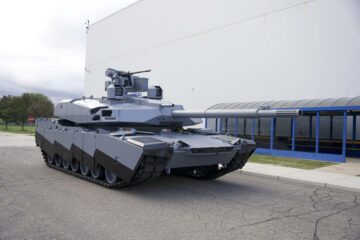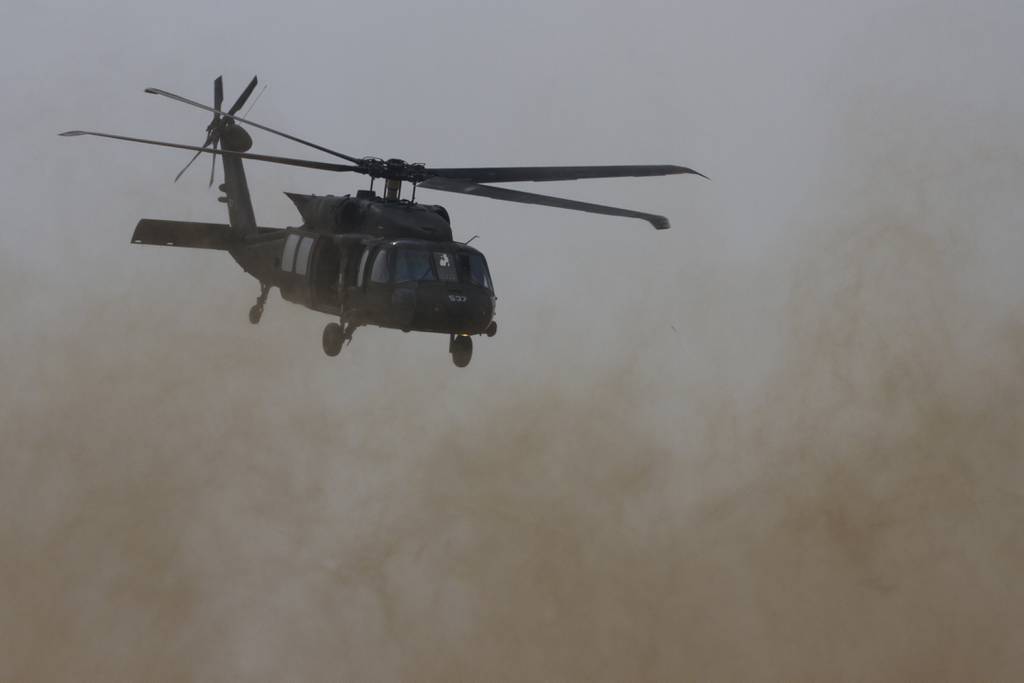
The U.S. Army will use funds freed up from the cancellation of its Future Attack Reconnaissance Aircraft program to upgrade its fleet of UH-60 Black Hawk utility helicopters, the service’s acquisition chief said.
Technology developed through the terminated program will also be applied to a wider variety of platforms, he said.
The service is “planning to set up additional research and development resources for the UH-60M Black Hawks to continue to improve that vital platform,” Doug Bush, the Army’s acquisition chief, told lawmakers during a House Armed Services Committee’s Tactical Air and Land Subcommittee hearing on March 6.
The end of the FARA program last month marked an abrupt change of direction in aviation modernization and became one of the service’s most significant program cancellations of the last decade. The Army had already spent at least $2 billion on the program and had requested another $5 billion for the next five years.
At the same time, the service scrapped its Shadow and Raven unmanned aircraft systems developed for the counterinsurgency fight nearly two decades ago and a program – the UH-60V – that upgraded Lima-model Black Hawks with a digital cockpit for the National Guard. The Guard will now get Mike-model UH-60s.
The Army also plans to invest in a new multiyear procurement buy of its UH-60M Black Hawks and purchase CH-47F Block II Chinook cargo helicopters it did not plan to procure for the active component. And it will invest roughly $2.5 billion across the next five years beginning in fiscal 2025 in new unmanned capabilities, according to Bush.
While FARA has come to an end, the Army said it needs the funding budgeted in FY24 to close out the program and wrap up some critical technology development efforts that can be transferred to other programs.
The FY25 budget request will show that the Army has requested funding for UH-60 research and development across its future years development program “that was not there before,” Bush said.
“When we go to that next multiyear, we hope that’s a better Black Hawk aircraft,” he said. “The one we have is great, but we hope that that R&D, cutting across the whole FYDP, that will allow us to have a better aircraft.”
Making Black Hawk better
One of the largest areas of technology development in the FARA program was focused on a modular open systems architecture.
That development will cascade to other aviation platforms from its Future Long Range Assault Aircraft to the current fleet of helicopters and even to other future platforms like the XM30 Mechanized Infantry Combat Vehicle in the design phase now, Gen. James Rainey, Army Futures Command commander, said during the same hearing.
The number one priority for Black Hawk upgrades will be incorporating the open system architecture, Maj. Gen. Mac McCurry, the Army’s Aviation Center of Excellence commander, testified at the hearing. “The ability for us to turn and be more nimble as we react to changes on the battlefield and put a new piece of kit on a Black Hawk, that open architecture helps us do that very well.”
The Army also “learned numerous things … modeling and simulation that we developed as part of this, the whole Launched Effects ecosystem was one of the main things we’ve benefited over the course of this study,” Rainey added.
Launched Effects will be deployed from both aircraft and ground platforms and will not only be able to perform armed scout-type missions for Army aviation but will be host to a wide variety of sensors and payloads to perform reconnaissance, take out enemy weapons, provide targeting or even extend network connectivity.
More technology that will be transferable includes work on Degraded Visual Environment capabilities, which the Army has been working on for many years, as well as sensor processing and heads-up mounted display advancements, according to McCurry.
Additionally, the service did a lot of work on sensor miniaturization and lightening payloads and sensors that can now be easily transferred to unmanned systems, he added.
And work on additive manufacturing to get away from forgings and castings will increase the Army’s maintenance-free operating periods, McCurry said.
A path for improved engine
The Army plans to spend some of its time closing out the FARA program testing out its Improved Turbine Engine Program engines in the FARA prototypes built in a competition between Lockheed Martin and Bell Textron. Both aircraft had been built and recently received ITEP engines to begin the process toward initial flights by the end of the year, prior to the program’s cancellation.
“We’ve got engines in test stands today. We’ve got engines in the aircraft today that we’re going to run in the FARA aircraft and we will learn from that,” Brig. Gen. David Phillips, the Army’s program executive officer for aviation, said during the hearing.
The ITEP engine program experienced technology development and supply chain hurdles, drastically delaying its introduction to the aircraft it will power including the FARA program. ITEP was originally designed to replace the engines in UH-60M and AH-64E Apache attack helicopters, giving the aircraft 3,000 shaft horsepower and increased fuel efficiency.
The Army is delaying procurement of the ITEP engine, a move it announced along with the FARA cancellation, but it is sustaining its research and development efforts, Bush reassured at the hearing.
“We’re going to revisit that in [the program objective memorandum FY]26, to understand based on how things are going with integration on Apache and Black Hawk, when those procurement dollars need to come back into the program,” he said. “The Army remains committed to that program and getting that capability to the fleet.”
Jen Judson is an award-winning journalist covering land warfare for Defense News. She has also worked for Politico and Inside Defense. She holds a Master of Science degree in journalism from Boston University and a Bachelor of Arts degree from Kenyon College.
- SEO Powered Content & PR Distribution. Get Amplified Today.
- PlatoData.Network Vertical Generative Ai. Empower Yourself. Access Here.
- PlatoAiStream. Web3 Intelligence. Knowledge Amplified. Access Here.
- PlatoESG. Carbon, CleanTech, Energy, Environment, Solar, Waste Management. Access Here.
- PlatoHealth. Biotech and Clinical Trials Intelligence. Access Here.
- Source: https://www.defensenews.com/land/2024/03/07/army-to-fund-black-hawk-upgrades-using-budget-from-canceled-helicopter/
- :has
- :is
- :not
- $2.5 billion
- $UP
- 000
- 2025
- 5
- 6
- 70
- 8
- a
- ability
- Able
- According
- acquisition
- across
- active
- added
- Additional
- additive
- additive manufacturing
- advancements
- ago
- AIR
- aircraft
- allow
- along
- already
- also
- an
- and
- announced
- Another
- Apache
- applied
- architecture
- ARE
- areas
- armed
- Army
- army aviation
- Arts
- AS
- assault
- At
- attack
- aviation
- award-winning
- away
- back
- based
- Battlefield
- BE
- became
- been
- before
- begin
- Beginning
- Bell
- Better
- between
- Billion
- Black
- Block
- boston
- Boston University
- both
- budget
- budgeted
- built
- but
- buy
- by
- CAN
- canceled
- capabilities
- capability
- Cargo
- Center
- Center of Excellence
- chain
- Changes
- chief
- Close
- closing
- Cockpit
- College
- combat
- come
- committed
- competition
- component
- Connectivity
- continue
- course
- covering
- critical
- Current
- cutting
- David
- decade
- decades
- Defense
- Degree
- deployed
- Design
- designed
- developed
- Development
- DID
- digital
- direction
- Display
- do
- dollars
- doug
- drastically
- during
- easily
- ecosystem
- effects
- efficiency
- efforts
- end
- Engine
- Engines
- Environment
- Even
- Excellence
- executive
- Executive Officer
- experienced
- extend
- fight
- Fiscal
- five
- FLEET
- Flights
- For
- from
- Fuel
- fuel efficiency
- fund
- funding
- funds
- future
- Futures
- FY
- Gen
- get
- getting
- Giving
- Go
- going
- got
- great
- Ground
- Guard
- had
- Have
- Hawk
- he
- hearing
- helicopter
- helicopters
- helps
- holds
- hope
- host
- House
- How
- HTTPS
- Hurdles
- ii
- images
- improve
- improved
- in
- includes
- Including
- incorporating
- Increase
- increased
- initial
- inside
- integration
- into
- Introduction
- Invest
- IT
- ITS
- james
- journalism
- journalist
- jpg
- kit
- Land
- largest
- Last
- lawmakers
- LEARN
- least
- lightening
- like
- Lockheed Martin
- Long
- Lot
- mac
- Main
- manufacturing
- many
- March
- marked
- Martin
- master
- Memorandum
- missions
- modeling
- modernization
- modular
- Month
- more
- most
- move
- multiyear
- National
- nearly
- Need
- needs
- network
- New
- news
- next
- nimble
- now
- number
- numerous
- objective
- of
- Officer
- on
- ONE
- only
- open
- operating
- or
- originally
- Other
- out
- over
- part
- path
- perform
- periods
- phase
- piece
- plan
- plans
- platform
- Platforms
- plato
- Plato Data Intelligence
- PlatoData
- power
- Prior
- priority
- process
- processing
- procure
- procurement
- Program
- Programs
- prototypes
- provide
- purchase
- put
- R&D
- range
- React
- received
- recently
- remains
- replace
- request
- requested
- research
- research and development
- Resources
- roughly
- Run
- s
- Said
- same
- Science
- sensors
- service
- Services
- set
- Shadow
- she
- show
- significant
- simulation
- some
- spend
- spent
- stands
- Study
- subcommittee
- supply
- supply chain
- system
- Systems
- tactical
- Take
- targeting
- Technology
- Technology Development
- test
- testified
- Testing
- that
- The
- There.
- things
- this
- those
- Through
- time
- to
- today
- told
- toward
- transferable
- transferred
- turbine
- TURN
- two
- u.s.
- understand
- university
- upgrade
- upgraded
- upgrades
- us
- use
- using
- utility
- variety
- vehicle
- very
- visual
- vital
- was
- we
- Weapons
- WELL
- when
- which
- whole
- wide
- wider
- will
- with
- Work
- worked
- working
- wrap
- year
- years
- zephyrnet




